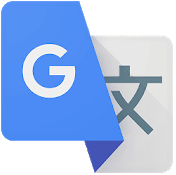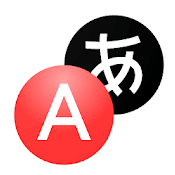What Is A Good App On Android For Real Time Translation
Horrible meat lock.
Slippery shrimp doctor.
A termination and four weddings.
These are just a few of the phrases left in my head after I finished testing out various translation app features with different texts.
Yes, machine translation has a long way to go.
But translation apps are very useful if you don't purposely push them beyond their capabilities (or even sometimes if you do).
What's more, most major automated translation technology is now available to the masses. That is, it's online and compatible with your humble Android phone. Often for free.
In this post, we're going to explore the possibilities presented by the best translation apps for Android.
But first, let's look at why you should care about translation apps in the first place.
Download: This blog post is available as a convenient and portable PDF that you can take anywhere. Click here to get a copy. (Download)

Why You Definitely Need at Least One Translation App
Whether you're a language learner, a traveler, someone living abroad, all of the above or none of the above, not having a translation app—assuming you have a smartphone—is just silly. Here are a few reasons why.
- You may need to have a conversation with someone who you can't communicate with otherwise. Language learners can be a proud bunch. "I'm learning so that I won't need to rely on a translator," we say. But the reality is that none of us know what language we're going to need and when, and there's no reason to let your pride get in the way of helping someone else or yourself, especially in an emergency situation.
- Translation apps with a voice recognition component are invaluable for language speaking practice. Even if you don't use a translator app for the intended purpose, they're actually a great way to practice your speaking. Voice recognition technology is definitely not perfect, but if a translator can understand you, there's a good chance that a speaker of the language you're learning will be able to, too.

- Some translation apps provide helpful context for understanding language. In this post, we won't just look at straightforward translator apps. The apps on this list provide features like phrasebooks, website translation and comparisons of human translations. These features can help you navigate confusing situations and learn how to approach real-world language, much like FluentU.
So let's check out the best translation apps for your Android.
The 8 Best Translation Apps for Android, Period
Before we start, I want to note a couple of things. First, there are a lot of translation apps, but many are just slightly different versions of other apps. These below all offer something unique.
Secondly, not all the language learning apps below can be compared apples to apples. Five are fairly similar in that they include the same basic translation features (text, voice, conversation, photo). The other three serve different primary functions and are still very useful.
All right, let's take a look!
Google Translate

Google Translate is still considered the translation app for a variety of reasons:
- It offers translations for over 100 languages.
- It offers translations for text, voice, (two-way) conversation, photoand handwriting. All of these features work relatively well across languages, are intuitive and are accessible from the home screen on the Android app. (Note: Not all features are available for all languages.)
- Additional features include the ability to save translations to a phrasebook and download some individual language packs for offline translation.
One thing Google Translate is notable for is its instant camera translation: You can simply aim your camera at whatever you want translated. This seems to work best on medium-sized printed text with good contrast (bold black font on white paper, for example). The main downside is that, especially with small-sized texts, translations fluctuate when the text is viewed at even slightly different angles, sometimes becoming jumbled up and illegible. However, if you can hold your phone with a steady hand, the feature can be very useful for reading menus, signs, flyers and the like. You can also opt to scan the text instead.
It's difficult to beat all of the above. Keep reading, though, because there are some surprises ahead.
Microsoft Translator

Microsoft Translator is also pretty good on all fronts. Here are the main differences between it and Google Translate:
- It offers translations in over 60 languages. Fewer than Google Translate, but still a lot.
- It also offers regulartext, voice, conversation and photo translations. All of these work decently, but some features aren't available for some major languages, e.g., you can't get photo translation for Arabic.
- Conversation features are more extensive. Rather than just having a two-way conversation, you can give out codes to multiple other users to let them join a conversation. This means you can essentially have a group chat where everyone is using their own phone to communicate remotely across different languages, with all text being translated into your language of choice. Each user can either input text with a keyboard, or do voice-to-text.
- Additional features includepre-made phrasebooks, offline language packs for some languages and the option to "pin" favorite translations.
- While you can't get instant camera translation like with Google Translate, the photo feature is clean, simple and may work better for smaller-sized texts.
Considering the above, Microsoft Translator might be best for business and academic purposes. It's not quite as user-friendly as Google Translate, but it has its advantages.
Yandex.Translate

Yandex is the translation app I found the most unexpectedly exciting. Let's look at the breakdown:
- It offers texttranslations in more than 90 languages. Not bad.
- It includes voice, conversation and photo translations for some languages. For me, these all worked pretty well.
- Additional features include built-in dictionaries,whole website translation, phrase collections, some offline language pair packs and the ability to save translations in Favorites.
- It also gives you the ability to interact with social media accounts and texting apps for quick communication.
So that's all good to know. But what was most impressive to me was the actual translation tech. As you type or talk, you can watch the translation shift and change according to the current context. In my experience, Yandex was the best at using context out of any of the apps on this list.
No joke, it photo-translated an entire page from Proust's "À la recherche du temps perdu" (In Search of Lost Time) from the original French in a way that was mainly comprehensible. And when I started inputting the actual text, it started translating it in a way that was virtually indistinguishable from a human translation. I'm not suggesting that it was able to make the same refined choices a human literary translator would make, but it definitely seemed to be educating itself as it went along.
Yandex's penchant for context may actually make it work less well overall for shorter texts like signs and titles. I noticed it sometimes tries to make sentences of bits of text that aren't actually linked. However, it can befrighteningly good at translating longer texts written in complete sentences. Frighteningly. Time to prepare for the robot revolution.
Naver Papago

Papago is a fairly new app made by Naver, the corporation behind the popular Korean search engine of the same name. Here's what it's got:
- Text translations between 13 languages.
- Voice, photo, and conversation translation between some languages. Voice recognition works pretty well; photo translation seems to work best for larger text. It isn't as intuitive as some photo translation on other apps. However, it gives you more options, allowing you to select what text you want translated.
- Handwriting input for East Asian languages (which, in my opinion and experience, works better than the Google Translate handwriting input).
- Whole website translation, pre-made phrasebooks with cool features like sample conversations and on-off switches for honorifics. It also has Papago Mini, which allows you to highlight any text on your phone screen and receive an instant translation without even switching apps.
Overall, Papago in some ways feels like a work in progress, but an ambitious and exciting one. Some of the features, like photo translation, feel a little shaky, but others, like the handwriting input, are incredible. Among English speakers, this onewill no doubt appeal most strongly to learners of Korean, Chinese and Japanese.
iTranslate

iTranslate is another translation app that offers all the main features of the major apps above, but it doesn't offer all of them for free. Here's what we're looking at:
- Text translations between 100 languages.
- Voice, conversation, photo and website translation.
- Offline translation for over 40 languages.
- Multiple additional features, includingdictionaries and verb conjugations, the ability to rate translations and the ability to adjust audio speed.
- Compatibility with the Dash Pro translating earphones .
Some features, including voice translation and Lens (the photo translation tech) are only available with iTranslate Pro for $39.99 a year (there's a week-long free trial).
I found that Lens was better at capturing smaller text in low-contrast situations than other apps. The voice recognition technology was also pretty impressive. However, in my experience, the actual translation results were mixed. Unlike with Yandex, iTranslateseems to do best with shorter, conversation-based translations.
In general, iTranslate isn't as user-friendly as Google Translate or many other apps, but there's a lot under the hood. Its main appeal is that it offers all-in-one features over a variety of languages. It seems like it would be best for dedicated travelers and business professionals who want to get as much as possible out ofonly one app and are willing to spend some time learning to use it most effectively.
SayHi

This super simple app uses Microsoft's translation tech along with a different type of speech tech and only one main feature:basic two-way conversation.
SayHi can quickly be fired up when you need it for a bilingual conversation. It's the simplest, most intuitive app on this list, and is good for everyone to have on hand, as it could come in handy in an emergency or other unexpected situation.
Reverso Translation Dictionary

You may be wondering, what is a "translation dictionary"? Well, Reverso uses Google's voice translation tech, but then allows you to deep-dive into the results and examine them closely through definitions, example sentences, related phrases and conjugations. In other words, it doesn't just leave you hanging with the given translation but allows you to check for yourself how accurate it is.
While, true to its name, Reverso makes it easy to reverse language pairs, its best application may be using a language you already know to look up idioms and other phrases you're unsure about in your target language. For example, "I need to get some air" in English brings up "J'ai besoin de prendre l'air" in French, along with related phrases and examples.
Dictionary Linguee

When you search for a word or phrase (which can also be done by voice lookup) on Linguee, you don't just get a definition. You get a host of already translated webpages between your learning and target language.
So for example, if I search for how to say "coffee" in Russian, it gives me the word, "кофе," along with example sentences and related words and phrases. It then gives me a whole list of excerpts taken from real websites that include the word "coffee" in English with the surrounding language and the Russian version of those same sentences.
Linguee gives you the chance to see how a word or a phrase has been translated in context, over multiple contexts.
This makes Linguee not only a great dictionary app, but a wonderful tool for professional translators, language learners and anyone else studying a language for any reason.
The robot revolution may not actually be here yet.
But there's no harm in making peace with the machines already among us.
Download any of these great translation apps for Android and see for yourself.
Elisabeth Cook is a freelance writer who blogs at Lit All Over.
Download: This blog post is available as a convenient and portable PDF that you can take anywhere. Click here to get a copy. (Download)
If you liked this post, something tells me that you'll love FluentU, the best way to learn languages with real-world videos.
Sign up for free!
What Is A Good App On Android For Real Time Translation
Source: https://www.fluentu.com/blog/best-translation-app-for-android/
Posted by: jacksonackles94.blogspot.com

0 Response to "What Is A Good App On Android For Real Time Translation"
Post a Comment